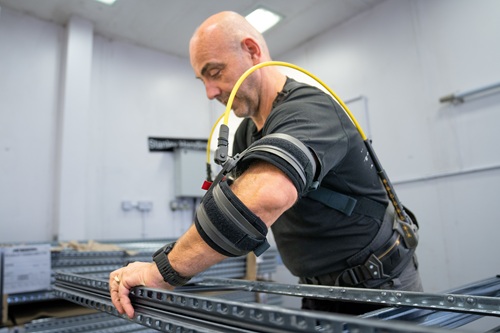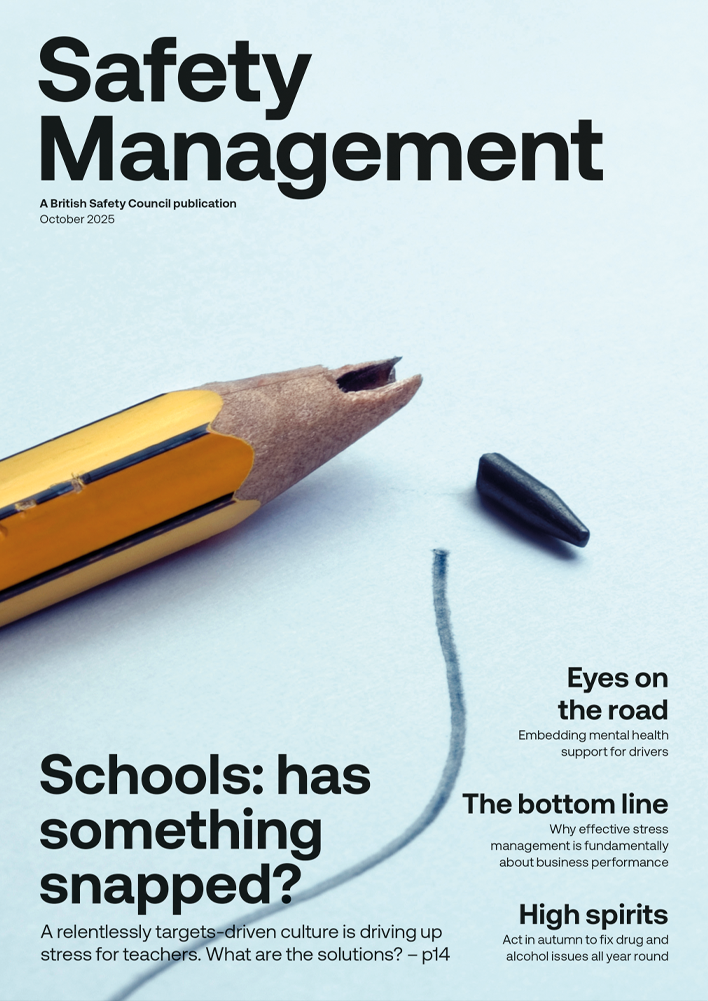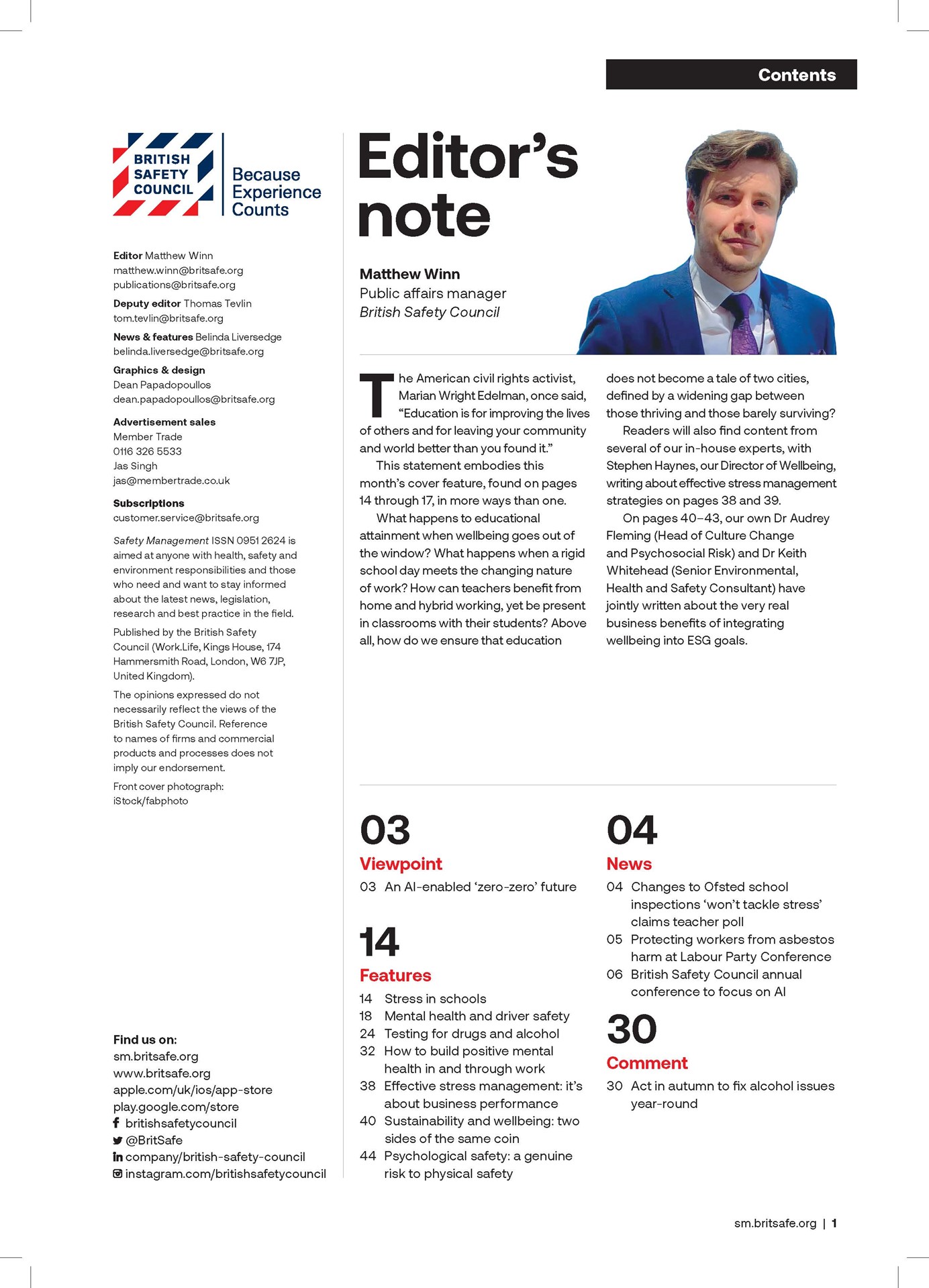Artificial Intelligence looks set to vastly reduce the amount of time and effort required to record, create and analyse occupational safety and ESG data, procedures and performance, while automatically providing insight into areas for improvement and areas of excellence.
Features
The AI safety revolution: augmentation, not elimination
If there’s one alarming trend growing steadily in the occupational health and safety space – regardless of the industry or sector you work in – it’s the ever-increasing pressure on EHS and OSH leaders to manage greater levels of risk, compliance and sustainability with fewer and fewer resources.
Organisations expect more rigour, more insight and more resilience than ever – and they want it faster, cheaper and with the same headcount (or often, less). And that pressure is only intensifying.
Ask any health and safety professional what they think might be their saviour in this gradually worsening predicament and Artificial Intelligence (AI) is likely to make the list. Yet ask them what they see as the biggest existential threat to their profession over the next five to 10 years and AI will likely top that chart too.
It’s a paradox, but it’s entirely understandable.
There’s a lot of anxiety around the impact of AI on knowledge workers across all industries and sectors. The idea of being rendered obsolete or being replaced by a virtual workforce that never sleeps, never calls in sick and doesn’t need a pension, is driving a real undercurrent of fear.
But strip away the hyperbole and the sci-fi narrative and focus on the real, value-driven use cases being developed in the field today and a different picture begins to emerge; one that’s far less threatening – and far more empowering. AI is not the enemy of the safety professional. It’s their superpower.
 Across proactive health and safety management, there are now clear, credible use cases for AI. Photograph: Notify Technology
Across proactive health and safety management, there are now clear, credible use cases for AI. Photograph: Notify Technology
Drowning in low-value work
Most health and safety professionals – whether they work in a global manufacturing company or a mid-sized construction firm – are spending huge portions of their time on low-value, reactive tasks.
Think poorly written incident reports that need finishing and correcting. Risk assessments that are incomplete, unclear or lacking detail. Data that needs extracting, reformatting, calculating and interpreting before it can be sent up-chain to executives or clients. Each task on its own is manageable. Collectively, they’re overwhelming.
According to McKinsey, this type of “work about work” accounts for 60–70 per cent of an employee’s time. That’s a bewildering amount of skilled labour being drained away on admin – and it’s exactly the kind of friction that AI is designed to remove.
What’s being lost in this flood of administrative effort isn’t just time, it’s impact. Safety professionals are left with little or no bandwidth to step back, identify root causes, develop proactive initiatives and coach their frontline teams – the very things they’re trained and employed to do.
 Alex Nichol: "AI, applied properly and built on a robust dataset, gives safety professionals an edge: the ability to be strategic, not just compliant."
Alex Nichol: "AI, applied properly and built on a robust dataset, gives safety professionals an edge: the ability to be strategic, not just compliant."
Real use-cases, genuine results
Across proactive health and safety management, there are now clear, credible use cases for AI – and the best of them are already delivering palpable results.
These include:
- Automatically summarising incident reports, investigations and root cause analysis
- Suggesting appropriate corrective and preventative actions based on historic data, regulatory guidance and best practice
- Identifying themes and trends to recommend toolbox-talks, training requirements and method statements
- Assessing the completeness and quality of submitted risk assessments in real time
- Proactively suggesting hazards and controls that might have been overlooked.
These tools aren’t hypothetical. They’re being piloted and refined today, in closed trials with some of the UK’s largest and most sophisticated employers across several high-risk industries.
Early indicators show strong gains in productivity – largely by eliminating repetitive grunt work and allowing safety professionals to focus on initiatives that actually reduce risk.
Productivity up, risk down
And we’re not alone in seeing it. McKinsey estimates that generative AI tools can boost individual productivity by 35–40 per cent, particularly in areas like documentation, reporting and data aggregation. These aren’t just incremental improvements – they’re the difference between being stuck in reporting cycles and proactively leading risk-reduction initiatives.
The World Economic Forum estimates that up to 60 per cent of workers could be impacted by AI, though many of them not in terms of job loss, but in how their work is done. They go further still3, estimating that for every job displaced by AI, 1.4 new roles are being created, especially in areas like supervision, systems analysis and decision support.
Far from decimating the role of the safety professional, AI is shaping a new version of it – one where digital literacy, data storytelling and strategic thinking take centre stage.
Beyond safety: ESG and sustainability gains
The benefits of AI aren’t confined to traditional safety functions either. Environmental and sustainability teams are increasingly tapping into AI to manage ESG risk, improve reporting accuracy and enhance visibility of compliance.
AI systems can now detect non-conformances across disparate sites that might otherwise slip through the cracks – and they can do so continuously, without fatigue, across thousands of data points. That means issues can be flagged and addressed earlier, reducing both environmental harm and regulatory exposure.
Accenture reports that AI-enhanced ESG platforms improve audit readiness and compliance tracking by up to 50 per cent. That’s not just about ticking boxes – it’s about spotting emerging issues before they escalate.
Letting humans do what they do best
AI isn’t about replacing human judgment; it’s about creating the space – and providing the insight – for humans to apply it more successfully.
AI doesn’t make decisions; it gives professionals smarter inputs, clearer options and faster access to the data they need. It removes the friction, reduces fatigue and ultimately increases confidence in human decision-making.
Duncan Davies, co-founder and CEO of Notify Technology, commented: “AI can’t walk the floor or inspire culture change – but it can give you the time back to do exactly that.”
Cutting through the noise
It’s true that some early-to-market AI tools have leaned heavily on marketing over substance. That’s not unusual for new tech, but the serious players in this space aren’t chasing gimmicks – they’re quietly and systematically building tools that deliver measurable, repeatable outcomes.
 Features like predictive analytics and real-time risk detection aren’t futuristic anymore. They’re on the roadmap now. Photograph: iStock
Features like predictive analytics and real-time risk detection aren’t futuristic anymore. They’re on the roadmap now. Photograph: iStock
Features like predictive analytics and real-time risk detection aren’t futuristic anymore. They’re on the roadmap now – and they’re being built with safety professionals, for safety professionals.
The best teams aren’t waiting to be told what to do with AI; they’re actively experimenting. They’re upskilling and they’re gradually building confidence in how to separate signal from noise.
Evolution is not optional
The EHS and OSH profession is evolving quickly. The volume of data, the pace of regulation and the expectations from leadership aren’t going to slow down. And the best teams aren’t just coping – they’re forging ahead.
AI, applied properly and built on a robust dataset, gives safety professionals an edge: the ability to be strategic, not just compliant.
The fear that AI might one day replace the safety professional misses the point entirely. The real risk isn’t AI doing your job – it’s AI enabling someone else to do it better, faster and with more insight.
So don’t fear the change – lead it. Now’s the time to get hands-on, to test, to learn – and to shape the role that AI will play in your organisation and your profession.
Because the future of safety leadership isn’t artificial. It’s superhuman.
For more information see:
notifytechnology.com
[email protected]
T. +44 (0)330 390 0530
Alex Nichol is Head of product at Notify Technology
FEATURES

AI-powered wearables: transforming workplace health and safety
By Graham Sharp, Stanley on 08 December 2025
Wearable technology powered by AI analysis is now regularly deployed to prevent safety problems like musculoskeletal injuries and collisions between forklifts and pedestrians, and future developments mean the technology looks set to make it easier to manage other safety challenges, like site evacuations.

Supporting neurodiverse employees: why standard DSE assessments fall short
By Guy Osmond and Alex Reffell, Osmond Ergonomics & Wellbeing on 08 December 2025
Display screen equipment assessments have traditionally focused on tackling the physical ergonomics of desk-based work in a bid to reduce musculoskeletal risks, but effectively supporting the wellbeing and productivity of neurodivergent workers involves a wider consideration of their cognitive, sensory, organisational and environmental needs.

Preventing drug and alcohol misuse through workplace testing
By Mark Burrup, Draeger Safety UK on 08 December 2025
Drug and alcohol testing can play a vital role in ensuring the safety of everyone at work, and simple, non-invasive testing devices are now available for fast and discreet results.



